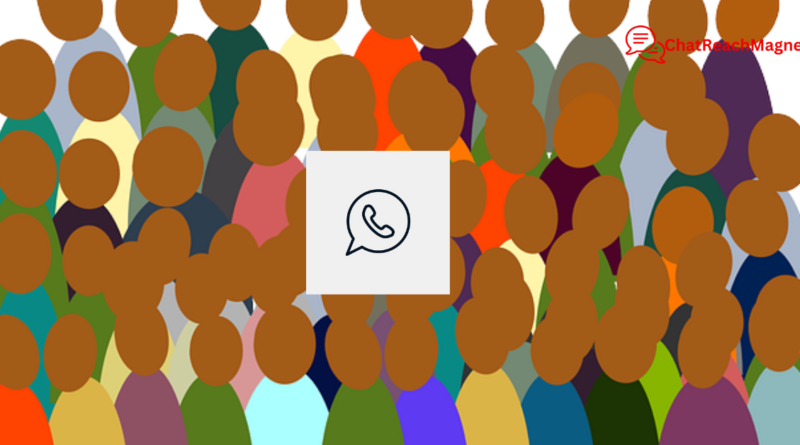7 Steps on How to Use Custom Audiences on WhatsApp to Drive Targeted Marketing Campaigns
Digital communication has become an integral part of our everyday lives—it’s hard to imagine a world without it. Every interaction, whether it’s sending a message, joining a group chat, or sharing a story, contributes to your brand’s presence online. WhatsApp, as a leading messaging platform, offers a unique opportunity to connect with customers directly and personally.
But how can you ensure that your messages are reaching the right audience at the right time? Understanding this is crucial for making the most out of WhatsApp marketing.
With billions of users on the platform, it might seem like your brand is getting noticed by everyone. Yet, with so many conversations happening simultaneously, it can be difficult to ensure your message stands out and reaches those who matter most to your business.
To overcome this, you need to understand the power of “Custom Audiences“—a targeted approach that allows you to deliver personalised messages to specific user groups on WhatsApp.
Custom Audiences work by segmenting your customers based on their behaviours, interests, or demographics, enabling you to create more relevant and engaging content. When used effectively, this targeted strategy can significantly boost customer engagement and drive conversions for your business.
In fact, personalised marketing strategies are proven to enhance customer loyalty and influence purchasing decisions. This makes knowing how to create and use Custom Audiences on WhatsApp essential for any business looking to maximise its marketing impact and growth.
What are Custom Audiences?

Custom audiences are specific groups of users segmented based on criteria such as past behaviour, demographic information, or engagement history.
This approach allows businesses to deliver highly relevant messages that are more likely to resonate with the audience, resulting in increased engagement, conversions, and overall ROI.
The Importance of Custom Audiences in WhatsApp Marketing
WhatsApp provides a direct line of communication with customers, making it an ideal platform for personalised marketing. By leveraging custom audiences, businesses can send targeted messages that are timely, relevant, and tailored to specific user segments.
For example, a business can create a custom audience for users who have shown interest in a particular product and send them updates on new arrivals or exclusive discounts. This kind of precision targeting improves the chances of conversion and fosters stronger customer relationships.
Step-by-Step Guide to Creating Custom Audiences on WhatsApp

To successfully utilise custom audiences on WhatsApp for targeted marketing, a structured approach is necessary.
Here is a step-by-step guide to help you set up and optimise your campaigns:
Step 1: Define Your Marketing Goals
Begin by defining clear marketing goals. Are you aiming to increase sales, boost brand awareness, or enhance customer retention?
Knowing your objectives will help you identify the right audience segments and tailor your messaging to achieve the desired outcomes.
Step 2: Gather and Organise Customer Data
Creating custom audiences requires access to accurate and relevant customer data. This data can be collected from various sources, including your website, CRM systems, social media, and previous interactions on WhatsApp. Focus on the following data points:
#1. Demographic Information: Age, gender, location, etc.
#2. Purchase History: Past purchases, frequency, and value.
#3. Behavioural Data: Website visits, app usage, and content interactions.
#4. Engagement Level: Interaction frequency and types of messages responded to.
Organising this data allows for meaningful audience segmentation that aligns with your marketing goals.
Step 3: Segment Your Audience
With the data at hand, segment your audience based on specific criteria such as:
Interest-Based Segmentation: Based on users’ interest in particular products or services.
Behavioural Segmentation: Group users by their behaviour, such as frequent buyers or those who have abandoned carts.
Demographic Segmentation: Segment users based on factors like age, gender, or location.
Proper segmentation enables more targeted messaging, enhancing campaign effectiveness.
Step 4: Create Your Custom Audience List
Using tools like the WhatsApp Business API or third-party platforms, you can create a custom audience list based on your segmentation criteria.
For example, you can create a list of users who have shown interest in a specific product category and send them tailored messages highlighting relevant offers.
Step 5: Craft Personalised Content
Personalised content is key to successful WhatsApp marketing. To ensure your messages resonate with each custom audience, consider the following:
Personalised Greetings: Use the recipient’s name to create a more personalised experience.
Highlight Relevant Offers: Focus on offers and content that align with the audience’s interests.
Include Clear Call-to-Actions (CTAs): Encourage users to take specific actions, such as visiting your website or making a purchase.
Step 6: Schedule and Automate Your Messages
Scheduling and automating messages ensure they reach users at the right time. The WhatsApp Business API allows for message scheduling, ensuring optimal delivery times.
Automation also helps in maintaining consistency, especially when managing large volumes of messages.
Step 7: Monitor and Analyse Campaign Performance
Continuous monitoring and analysis are vital for optimising your WhatsApp marketing campaigns. Focus on key metrics like:
Open Rate: The percentage of users who opened your message.
Click-Through Rate (CTR): The percentage of users who clicked on a link or CTA.
- Conversion Rate: The percentage of users who completed a desired action.
Engagement Rate: The level of user interaction with your messages.
Analysing these metrics helps identify what’s working and what needs adjustment, allowing for data-driven optimisation.
Best Practices for Using Custom Audiences on WhatsApp

To maximise the effectiveness of custom audiences in WhatsApp marketing, consider the following best practices:
#1. Respect User Privacy
Always comply with data privacy regulations such as GDPR or CCPA. Ensure you have user consent before sending messages and provide easy opt-out options.
#2. Balance Promotion with Value
While promoting your products or services is essential, providing value to your audience is equally important. Make sure your messages are not overly promotional and include content that educates, informs, or entertains.
#3. Test and Iterate
Constantly test and refine your campaigns. Experiment with different messaging styles, content formats, and delivery times to find what resonates best with your audience.
#4. Leverage Multimedia Content
WhatsApp supports various multimedia formats like images, videos, and voice notes. Use these formats to create engaging and visually appealing messages. For example, a short video highlighting a new product can be more compelling than plain text.
#5. Segment Further Based on Engagement
Further segment users based on their engagement levels. For example, send exclusive offers to highly engaged users and re-engagement content to less active users.
Conclusion
Utilising custom audiences on WhatsApp is a powerful strategy for driving targeted marketing campaigns. By segmenting your audience and crafting personalised messages, you can significantly boost engagement and conversion rates. However, success in WhatsApp marketing requires a thoughtful approach, continuous monitoring, and a focus on delivering value.
Following the steps and best practices outlined in this guide will help you harness the full potential of custom audiences on WhatsApp and achieve your marketing goals more effectively.

